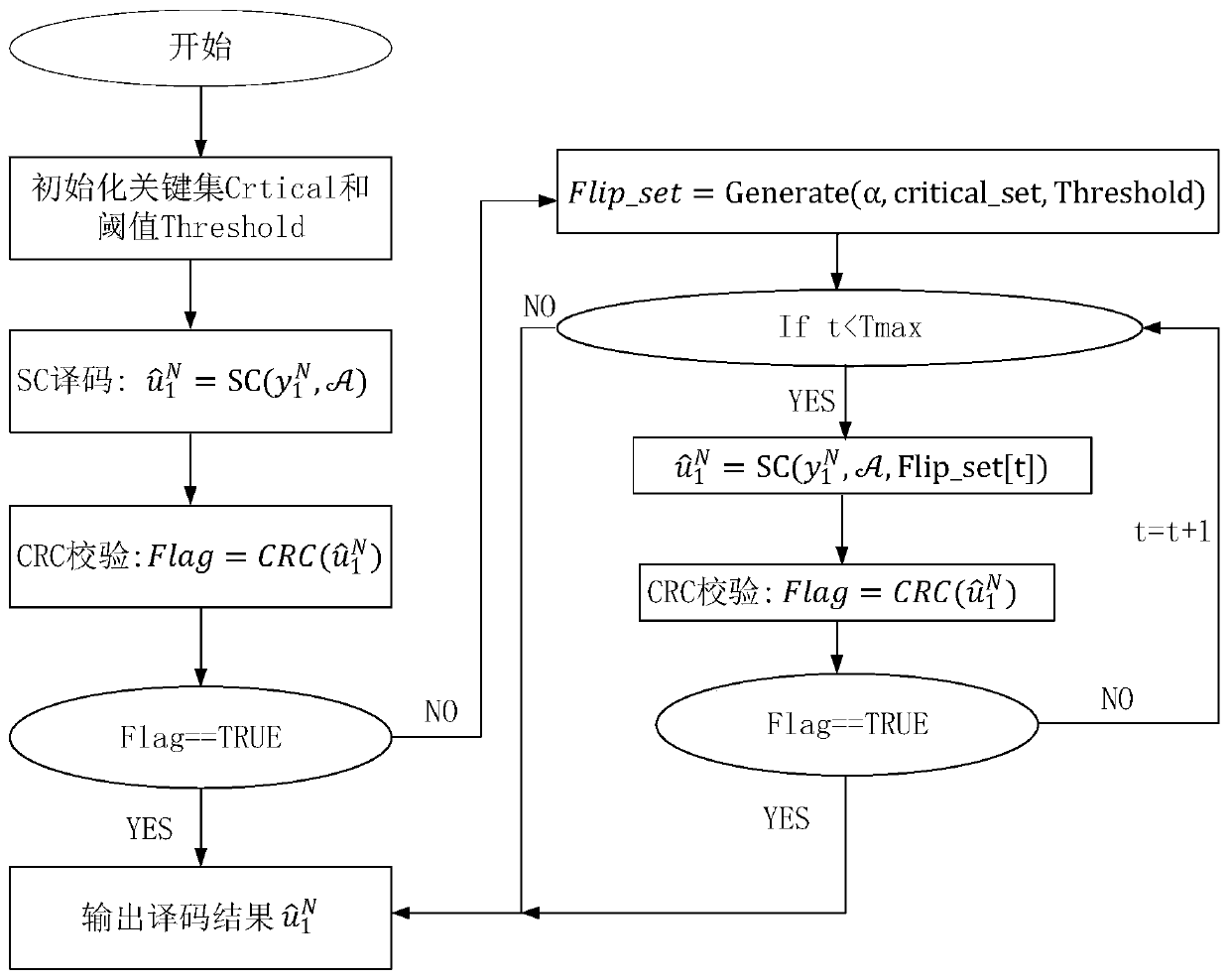Bit inversion decoding method based on threshold value of polar code
A technology of bit inversion and polar code, which is applied in the field of communication, can solve the problems of small error probability of the first bit, increasing computational complexity of the algorithm, candidate inversion bit errors, etc.
- Summary
- Abstract
- Description
- Claims
- Application Information
AI Technical Summary
Problems solved by technology
Method used
Image
Examples
Embodiment Construction
[0034] The present invention will be further described below in conjunction with the accompanying drawings and embodiments.
[0035] Firstly, the calculation process of the threshold is explained. Suppose the code length of the polar code is N=8. According to the Gaussian approximation theory, the calculation process of the error probability of the 8 polar sub-channels is as follows: figure 1 shown. enter where σ 2 is the noise variance, then By analogy, it can be calculated Then the final error probability is So far, the basic threshold is T i =log(1-p i / p i), i=1,2,...,8. Finally, take k=1, scan the simulated FER at an interval of 0.1, and find the best klog(1-p i / p i ).
[0036] T-SC-Flip decoding such as figure 2 Shown: First initialize the key set Crtical and threshold Threshold, and then receive information according to the decoder and non-frozen bit positions Perform SC decoding, and the decoding result is right Perform CRC check, if the c...
PUM
 Login to View More
Login to View More Abstract
Description
Claims
Application Information
 Login to View More
Login to View More - Generate Ideas
- Intellectual Property
- Life Sciences
- Materials
- Tech Scout
- Unparalleled Data Quality
- Higher Quality Content
- 60% Fewer Hallucinations
Browse by: Latest US Patents, China's latest patents, Technical Efficacy Thesaurus, Application Domain, Technology Topic, Popular Technical Reports.
© 2025 PatSnap. All rights reserved.Legal|Privacy policy|Modern Slavery Act Transparency Statement|Sitemap|About US| Contact US: help@patsnap.com


